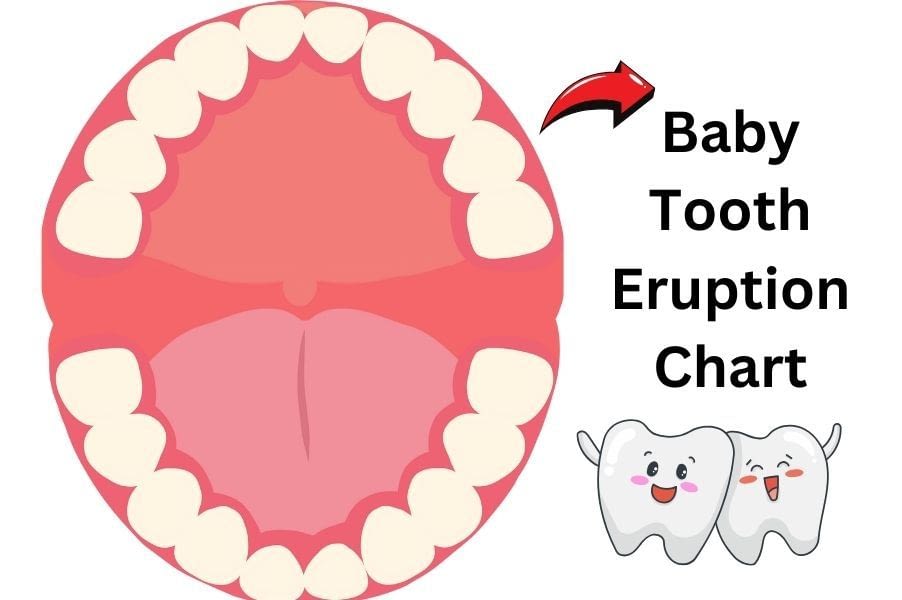Understanding the timeline of your child’s tooth growth is more than waiting for that first proud smile featuring a new tooth — “Ensuring their oral health receives proper attention right from the start is essential.” This comprehensive guide is tailored to help parents navigate through the different stages of tooth development and offer insight into what to expect as your child’s smile evolves.
As parents, one of the developmental milestones we eagerly anticipate is when our child’s first tooth erupts. Teeth are a fundamental part of human growth and play a critical role in nutrition, speech development, and that adorable smile. But how long does it take for a tooth to grow and make its grand appearance, and what can you do to support healthy dental progression?
Primary Teeth (Baby Teeth)
Baby teeth, also known as primary teeth, are temporary teeth that permanent teeth will eventually replace. The eruption timeline for these teeth typically starts around six months of age but can vary significantly from child to child. On average, most children will have a complete set of 20 baby teeth by three years.
Timeline for Eruption and Shedding
- 6 to 10 months: The two bottom front teeth (central incisors)
- 8 to 12 months: The four upper front teeth (central and lateral incisors)
- 9 to 13 months: The two lower lateral incisors
- 14 to 18 months: The first molars
- 18 to 24 months: The canines (cuspid teeth)
- 25 to 33 months: The second molars
Factors That Can Affect the Timeline
- Genetics: Just as with other developmental milestones, timing can be influenced by family history.
- Oral Hygiene: Good oral care can prevent issues that might delay tooth eruption.
- Nutrition: A well-balanced diet is essential for proper growth and development, which includes the growth and health of teeth. It provides the necessary nutrients that are required for healthy teeth.
Permanent Teeth: how long does it take permanent teeth to come in?
Transitioning from baby to adult teeth is essential in dental development. Most children start losing their baby teeth at age 6, which are later replaced by permanent teeth. This process generally continues until age 12 but may extend into the teenage years for some.
Eruption Timeline for Permanent Teeth
- 6 to 7 years: The first molars and lower central incisors
- 7 to 8 years: Upper central incisors
- 8 to 9 years: Upper and lower lateral incisors
- 9 to 13 years: Premolars, canines, and molars
- 17 to 21 years: Wisdom teeth (not everyone has these)
Common Variations and Their Implications
The variations in eruption timelines often cause little concern, but occasionally, they may indicate the need for orthodontic evaluation, especially if they lead to crowding or misalignment.

How long does it take for a tooth to grow back for a 12 year-old?
For a 12-year-old, the dental landscape is actively changing. Most children at this age are in the final stages of replacing their primary teeth with permanent ones. Typically, by age 12, most permanent teeth have already erupted, except for the third molars or wisdom teeth.
The exact timing can vary, but for many children, the process of a new tooth filling the space of a lost one can take several months up to six months. However, if a 12-year-old loses a tooth unexpectedly, such as in an accident, it is imperative to see a dentist to assess the status of the underlying permanent tooth.
How long does it take for a tooth to grow back for a 7 year old?
At the age of 7, children are commonly experiencing the loss of their primary, or baby, teeth. This is also the age when the first permanent molars often appear, which do not replace any primary teeth and thus are sometimes called the “six-year molars.” When a 7-year-old loses one of their front teeth, the permanent tooth may take a few months to grow.
It is not unusual for it to take anywhere from four to seven months for the new permanent tooth to erupt into place fully. It’s important to remember that each child’s development is unique, and some variability in this timeline is entirely normal.
Why is my child’s tooth not growing back? Understanding Delayed Tooth Eruption
If you’ve noticed that your child’s tooth is not growing back, it’s understandable to feel concerned. Various factors contribute to this delay, with individual differences playing a significant role. While the majority of children will follow the typical eruption timeline, some may experience what’s known as delayed tooth eruption.
This could be due to hereditary traits, where the child has inherited a pattern of later tooth emergence from their parents. In other cases, overcrowding in the mouth or impaction can hamper a tooth’s ability to break through the gums.
Additionally, systemic conditions, nutritional deficiencies, or hormonal imbalances may influence dental development.
Other factors affecting tooth growth
Numerous factors can impact the timing and manner of dental development in children.
Nutrition and Diet
Ensuring a well-rounded diet abundant in essential vitamins and minerals is crucial. Dental health relies on critical nutrients such as calcium, phosphorus, and Vitamin D.
Oral Hygiene Practices
Encourage good oral hygiene early, even before the first tooth erupts, by wiping gums with a soft cloth. As teeth emerge, use a gentle child-sized toothbrush.
Overall Health and Systemic Conditions
Chronic health issues or specific conditions, such as cleft lip or palate, may impact the timing and sequence of tooth growth.

Teething Process: How long does it take for a tooth to grow back?
The teething process can be a source of discomfort for little ones. Typical signs of teething include drooling, irritability, and a sudden urge to chew on everything.
Tips for Soothing Teething Discomfort
- Offer a teething ring or cold spoon to chew on
- Gentle rub the gums with a clean finger
- Over-the-counter remedies, after consulting with a pediatrician
Dental care for growing teeth
Regular dental checks ideally start with the first tooth’s appearance or by the child’s first birthday.
Importance of Regular Dental Visits
These initial appointments can aid in identifying possible concerns and laying the groundwork for establishing good oral hygiene practices.
Proper Oral Hygiene Practices for Children
Teach children to brush twice daily with fluoride toothpaste and introduce flossing as more teeth come in.
Conclusion: How long does it take teeth to grow back?
Every stage of your child’s dental journey is vital, from those first baby teeth to the last wisdom tooth. As parents, you play a critical role in guiding and advocating for their oral hygiene.
Parents often ask how long teeth need to grow back after tooth extraction, especially for children involved in sports or accidents. Gentle reassurance and understanding of the healing process are crucial. Additionally, as pre-teens move into their teenage years, knowing how long it takes for a tooth to grow can prevent anxiety and promote a proactive approach to dental care.
For moments like these, having a trusted set of Teething Tips can make all the difference. As your child grows, keep these guidelines handy, and remember that the best resources are often simplicity and your pediatric dentist’s expertise.
Raising awareness and imparting knowledge on tooth growth timelines empowers parents with the tools they need for their children’s oral health challenges. Ensuring proper nutrition, oral hygiene, and regular dental visits will go a long way in ensuring your child’s dental panorama remains picturesque — from their first tooth to their confident, healthy adult smile.
Remember, the next time you ponder, “How long does it take for a tooth to grow in for a teenage?” think back to the words of this blog. With patience, care, and a little knowledge, you and your child will gracefully navigate the seas of dental development.
1 Visit today





